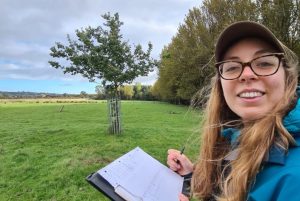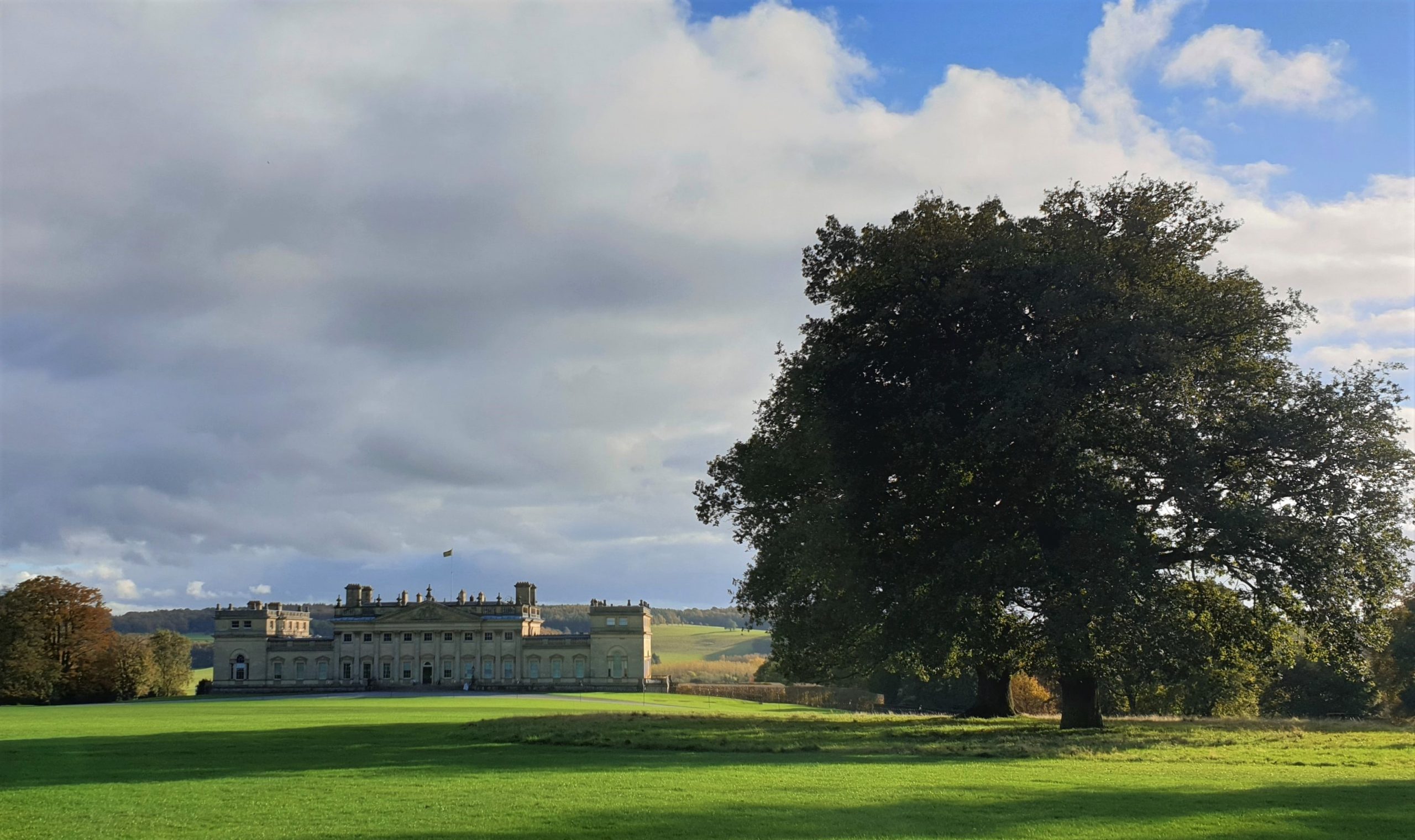2022 Awards Winners Spotlight: Postgraduate Student Project Award
Louise Henry ACIEEM, University of Leeds
A big house in the country: Assessing the biodiversity and ecosystem service values of trees and their management trade-offs in the Harewood Estate parkland
Louise’s study sought to determine the value of biodiversity and ecosystem service benefits within the Harewood Estate parkland, identify the characteristics that influence these values, and identify trade-offs between them to support management decisions. To achieve this, Louise utilised the well-defined and reproducible Tree-related Microhabitats (TreMs) methodology (to assess biodiversity), i-Tree Eco software (to quantify the forest structure, regulating ecosystem services and economic value of the parkland trees) and CAVAT tool (to quantify the amenity value of parkland trees by estimating their replacement cost), and statistically modelled to determine the main tree and landscape drivers of the biodiversity and ecosystem service values.
A total of 566 trees were surveyed. Data on the tree species and locations were recorded, along with detailed field measurements to assess the size and condition of each tree. The study focused on three areas of parkland chosen to represent differing parkland management regimes. The Deer Park is grazed by a managed herd of red deer (Cervus elaphus) and fallow deer (Dama dama). The North Front is a frequently mown parkland used by visitors and for outdoor events. The South Park is managed by a mixture of mowing, hay cropping and grazing by sheep.
Results showed that despite relatively low levels of diversity within the tree communities themselves, TreM diversity was higher in parkland trees than trees found in broadleaf European forests (based on studies using the same methodology), suggesting the larger trees found in the Harewood Estate parkland are likely able to support higher biodiversity as individuals. Parkland trees were found to provide 1,224,030 kg of carbon storage, 14,522 kg/year of gross carbon sequestration, 693 m³/year avoided stormwater runoff, 412 kg/year air pollution removal and £28,117,919 in cultural amenity value. Biodiversity, and both regulating and cultural ecosystem services were found to be synergistic when trade-off analysis was undertaken, suggesting the Harewood Estate parkland is a successfully multifunctional landscape.

The thesis provided several recommendations based on findings and wider literature for future management of the estate to maximise these benefits, notably, that a parkland tree management plan should be created, with future management initially focused on maintaining and retaining veteran and ancient trees as these trees provide greater benefits the larger and older they become.
The report shows an awareness for the debate about the valuation of the nature and the importance of a multidisciplinary approach when making management decisions based on valuations, and sets out key limitations in the methodologies, such as giving a value to cultural ecosystem services.
Overall, the project is well presented with an introduction and methods, three research sections (biodiversity, ecosystem services, and trade-offs and synergies), discussion bringing the research sections together, and conclusions/recommendations, with a high standard of writing.
We will be posting further information on each of the 2022 CIEEM Awards Winners over on our blog.

